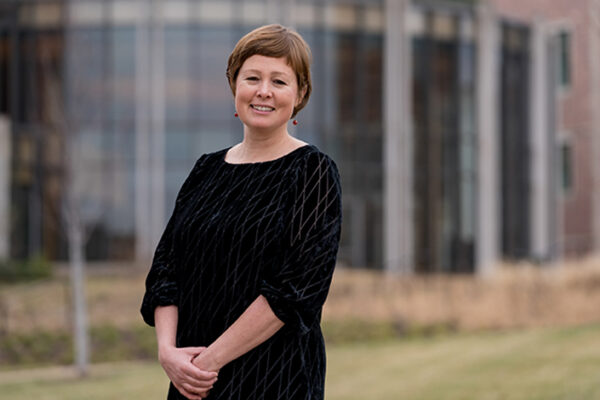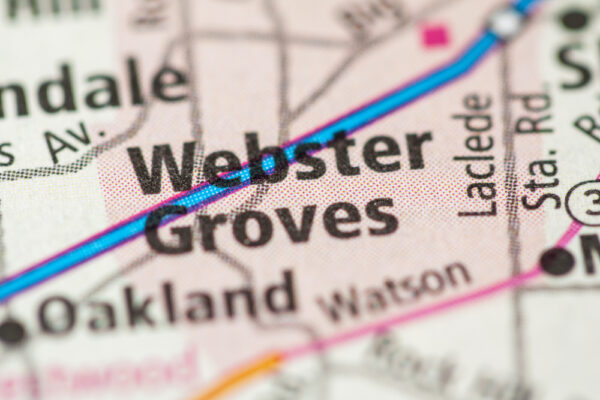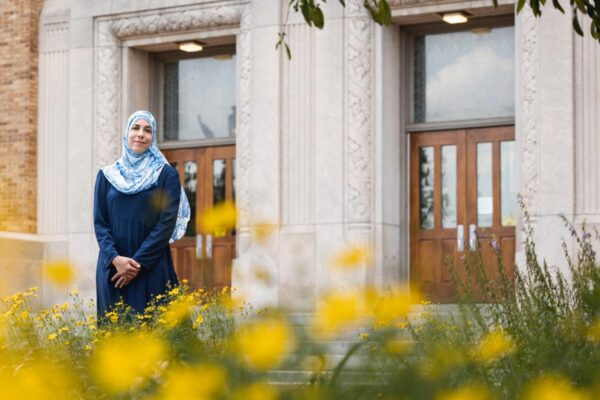Washington University in St. Louis Brown School students in the “Community Development Practice” class engaged with community partners and contributed to hands-on projects to improve neighborhoods in south St. Louis.
Taught by Molly Metzger, a senior lecturer in the school, the spring semester class focused on sustainable community development projects related to pedestrian safety, neighborhood planning and addressing resident concerns over public safety.
“When I inherited this course, I started to think about how I could connect it to other interests that I’ve been developing around climate change and sustainability and integrating a greater ecological awareness into social work,” Metzger said.
She began looking for a suitable community partner to connect with and reached out to the Dutchtown South Community Corp.
“Dutchtown South came to mind because they are engaged in powerful and holistic work and their Gravois-Jefferson Neighborhoods Plan seemed perfect for us to concentrate on as a class,” Metzger said.
“They are providing housing and community spaces for existing residents, as opposed to gentrifying or displacing people.”
The class focused on three specific areas:

- Walk audit and Froebel Greenway: A walk audit is an assessment of the pedestrian safety, accessibility and comfort of a particular area. Students were asked to develop a walk audit of the Gravois-Jefferson neighborhood, including thinking about the future path of a greenway running east from Froebel School, a neighborhood elementary school that is part of Saint Louis Public Schools.
- A new look at the Gravois-Jefferson Plan: The Gravois-Jefferson Neighborhood Plan was adopted in 2018. The plan is being refreshed to reflect progress to date and current resident priorities. Dutchtown South Community Corp. is working to gather community-level data and will launch an implementation committee later this year. As part of the preparation for this committee, students in the class created a condensed and approachable overview of the Gravois-Jefferson plan.
- Re-envisioning public safety: One student assignment was to help residents more easily contact city services to improve their neighborhoods. From potholes to overfilled dumpsters to public safety concerns, residents often have issues that the city needs to address, but the methods to connect with city departments are often unclear or fraught with red tape.
Building momentum
“One of the main goals of the class was to work closely with a community partner who would be continuing the work after the students left,” Metzger said. “We did not want this to be a one-off, but rather a sustainable effort that will continue to build momentum.
“Regarding our ‘In St. Louis, For St. Louis’ initiative at the university, we wanted to focus on “With St. Louis,” she said. “We wanted to really think about what is already happening in our city to thoughtfully consider how we might contribute.”
Having opportunities like this also makes it more likely that students who are not from St. Louis will stay here and remain connected with this amazing city, Metzger said.
“The biggest thing I will take away from this class is what thoughtful and informed community development work actually looks like,” said Caroline McDonald, a first-year master’s of social work student.
“We throw around terms like ‘community engaged,’ ‘community informed’ and ‘community driven’ a lot at Washington University, and especially at the Brown School,” she said. “However, we often do not consider what it looks like for us to enter communities for such short time frames and whether the work we’re doing is what our community partners want or need.
“Professor Metzger and our teaching assistant Rachel Hurtado set a great example of how to meaningfully engage with community partners in ways that lay the groundwork for future involvement without being exploitative or transactional,” McDonald said.
Metzger said she will consider the course a success if “we have done thoughtful and meaningful work that will be used by Dutchtown South and our other community partners as they move forward.
“The community residents know what they need in their neighborhoods and if our projects are successful, they will work seamlessly with those larger efforts to make that vision happen,” she said.
“That vision includes safety, defined in a holistic way. That means streets where people are driving more slowly; cooling of neighborhoods with more greenery and spaces that are comfortable and beautiful to walk; residents showing up to advocate for what they need with the information they need to get it done. Those are some of the things we are trying to support.”




